|
Willow Lu
Nakasendo Walking Trail: from Magome-juku to Tsumago-juku

Our Route:
- Magome-juku (Nakatsugawa, Gifu Prefecture) → Tsumago-juku (Nagiso, Nagano Prefecture)
“Nakasendo” is a route connecting what was Edo (modern-day Tokyo) to Sanjo Ohashi in Kyoto. As two stations of this route, Magome-juku (Nakatsugawa, Gifu Prefecture) and Tsumago-juku (Nagiso, Nagano Prefecture) have still kept the old Edo style, the route is becoming more and more popular with European and American tourists.
It takes about 3 hours to walk from Magome-juku to Tsumago-juku. While walking you can enjoy the pleasant scenery and fresh air.
In the past, there were 5 routes like Nakasendo connecting Edo to other Japanese provinces: Tokaido, Nikko Kaido, Oshu Kaido, Nakasendo and Koshu Kaido. Nakasendo is around 540 km long with 69 stations, converging with Tokaido at Kusatsu-juku (the 52nd of 53 stations of Tokaido). According to the historical records, many famous people, who influenced Japanese history, walked on this route before. For example, Minamoto no Yoshinaka (entered the Genpei War by raising an army and invading Echigo Province), Tokugawa Hidetada (the first shogun of the Tokugawa shogunate) and Kondo Isami (commander of the Shinsengumi).
From Magome-juku to Tsumago-juku, you need to cross a gentle hill. From Tsumago-juku to Magome-juku, you have to go across a lengthy slope. No matter which direction you choose, the time you need is almost the same. Nakasendo is a good route to get some exercise.
To arrive at Magome-juku, I took the bus (Iida・Ina・Minowa direction) at Meitetsu Bus station (Nagoya), and got off at Tyuuodo-magome(中央道馬籠) station.
-
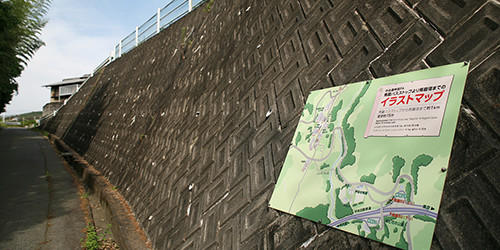
8:35 START!
This time, I chose the second way to Magome-juku. It will be easy to find a guide map like this after getting off the bus. By following the old Nakasendō route, we should arrive at Magome-juku.
-

8:43
If you have lived in the city for a long time, you will be surprised by the natural scenery there. The air is so pure that you will want to take a deep breath every time.
While walking from the bus station, you can enjoy the pastoral scenes all the time. Not only your body but also your soul will be thoroughly relaxed thanks to the walk. -
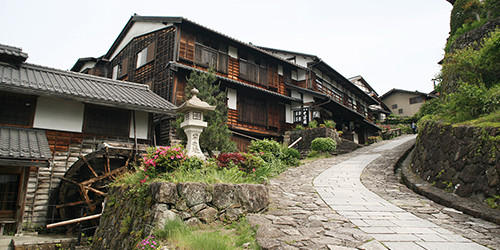
9:03
When you see a stone road, it means you are already at your destination - Magome-juku.
Beside the south waterwheel, there is one special structure named “Masugata(枡形)”which was used for defense. It was widely used in Japanese castles. As an enemy army could not walk from the entrance to the exit in a straight line, the attack from the enemy would be weakened. -
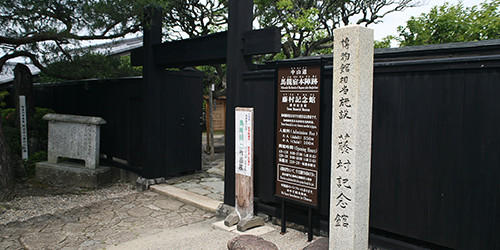
9:20
Magome-juku is the 43rd station of the Nakasendo. Both the Japanese ukiyo-e artists Utagawa Hiroshige (Japanese: 歌川 広重) and Keisai Eisen (Japanese:渓斎 英泉 ) drew pictures about tourists passing through the station. As well as this, Toson Shimazaki, a famous Japanese author, was born here. The story of Before the Dawn, his most famous Japanese historical novel, also happened here. Furthermore, there is a Fujimura Memorial to commemorate him.
-

9:40
The post is so cute! Don’t you want to send a postcard to your friends? There are many lovely things here. You can for example cosplay as an Edo tourist by using the cosplay attraction in the rest area.
-

10:17
After enjoying the Edo-style atmosphere at Magome-juku, you can find an observatory at the end of the stone road. From here, you can get a good view of the Mount Ena, one of the “100 Famous Japanese Mountains”.
-
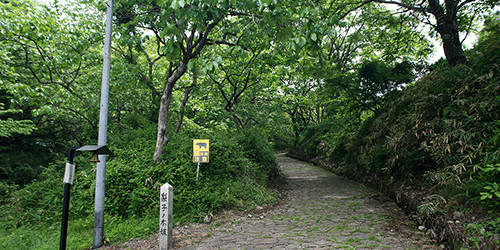
10:36
From here to Tsumago-juku, you need to walk over a hill. As once in a while there are some bears on this route, you can see many bells on your way. If you meet a bear here, don’t be afraid, you can make them leave by ringing the bells.
The stone road here is as good as the famous one in Kumamoto-ken, isn’t it? -
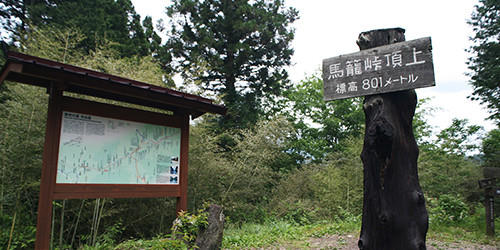
11:02
Reach the top of the hill!
Here is the boundary between Gifu-ken and Nagano-ken. If we cross it, we will be in Nagano-ken. Maybe it was more like going to another country for the tourists of the Edo-period. -

11:25
Walking a little from the top, there is a tearoom. You can get warm tea and sugar for free there while talking with the manager and the other tourists. If you want, you can write your words in a guidebook which is full of messages in various languages. The common language here is English!
-
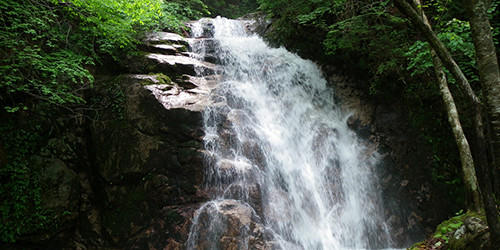
12:15
There are 2 waterfalls named Odaki (Japanese:男滝) and Medaki (Japanese:女滝). According to legend, it was the place where the expert Japanese swordsman Miyamoto Musashi once trained.
It is worth spending some extra time here enjoying the scene. -
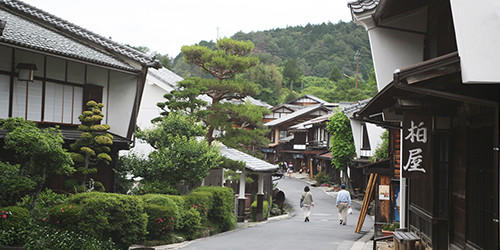
15:02
While walking on the route you will arrive at Tsumago-juku. It is the 42nd station of Nakasendo. Many things from the Edo-period still remain now. It is also one of the first areas to be chosen as the Groups of Traditional Buildings in Japan.
-

15:30
This is the Waki-honjin (Okuya). It has been chosen as an Important Cultural Property (Japan). The building construction used a lot of Chamaecyparis obtuse (a kind of tree only found in Japan). These days it is used as a museum to show how daily life was for citizens during the Edo period.
For the tickets, you can buy one set for Waki-honjin(Okuya) and Tsumagojuku-honjin that costs just 700 yen. -
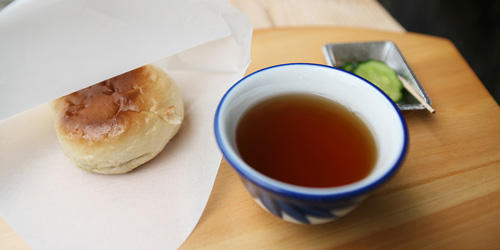
15:50
You can taste many Edo style desserts in Tsumago-juku. If you want to rest, it would be a good idea to enjoy a warm tea just like the tourists of the Edo period did.
-

16:00 Finish!
At the same time, you might want to buy a walk certificate to prove that you finished a walk from Magome-juku to Tsumame-juku like an Edo-period tourist. One more special feature is that the certificate is made from Chamaecyparis obtuse.
What a wonderful trip it is! To go to Nagiso JR station, we also can take a 40-minutes walk, but I am so tired and I found a but to the station. It only cost 10 minutes.
If you are interested in the street of old Edo style, please come here and take a look!




